Google Sheets search feature makes it easy for you to quickly find the exact information you need, which is very helpful for sorting through lots of data.
This article breaks down how to search in Google Sheets using six different ways. We cover the use case for each method, including how long it takes, its cost, and how to use it. Here’s a quick rundown of each method’s use case.
- Find and Replace: this lets you quickly search for specific data in your spreadsheet and replace it with new information.
- Softr automation: it handles more complex data searches involving multiple criteria, conditions, and patterns than Google Sheets functions.
- Keyboard shortcuts: this is one of the quickest ways to search in Google Sheets.
- Conditional formatting: it visually highlights and formats cells based on specific conditions.
- Filter views: it allows you to create custom filtered versions of your data without affecting the view for others
- VLOOKUP function: this function allows you to look up certain data in your spreadsheet;
- HLOOKUP function: it allows you to search for a value in a cell and retrieve a corresponding value from another one;
- INDEX and MATCH functions: the combined use of these functions allow you to search based on various criteria and retrieve data from different cells;
- QUERY function: this function allows you to perform SQL-like queries.
How to search in Google Sheets using Find and Replace
Cost: $0
Time: 1 minute
The "Find and Replace" feature in Google Sheets allows you to quickly search for specific data in your spreadsheet and replace it with new information.
It's particularly useful when you have to find multiple data occurrences, correct errors, or update outdated information to ensure consistency.
However, you can’t use this feature for more complex data searches; but not to worry, we cover other methods that can help with this.
Let’s go over the steps for using “Find and Replace”
Step 2: Enter the value you want to search for in the Find field.
In the "Find" field, type the text you want to search for:

This step helps you identify instances of the search term within your spreadsheet, as Google Sheets will highlight the cells that contain the term you've entered once you click “Done.” This makes it easier for you to review and work with that data.
If you want to replace the search term with something else, proceed to the "Replace with" field within the dialog box. Just type the text you want to use.
Step 3: (Optional) Choose your search criteria
To access advanced search options, click on the button beside the “Search” option. You’ll find this just below the “Replace with” feature:
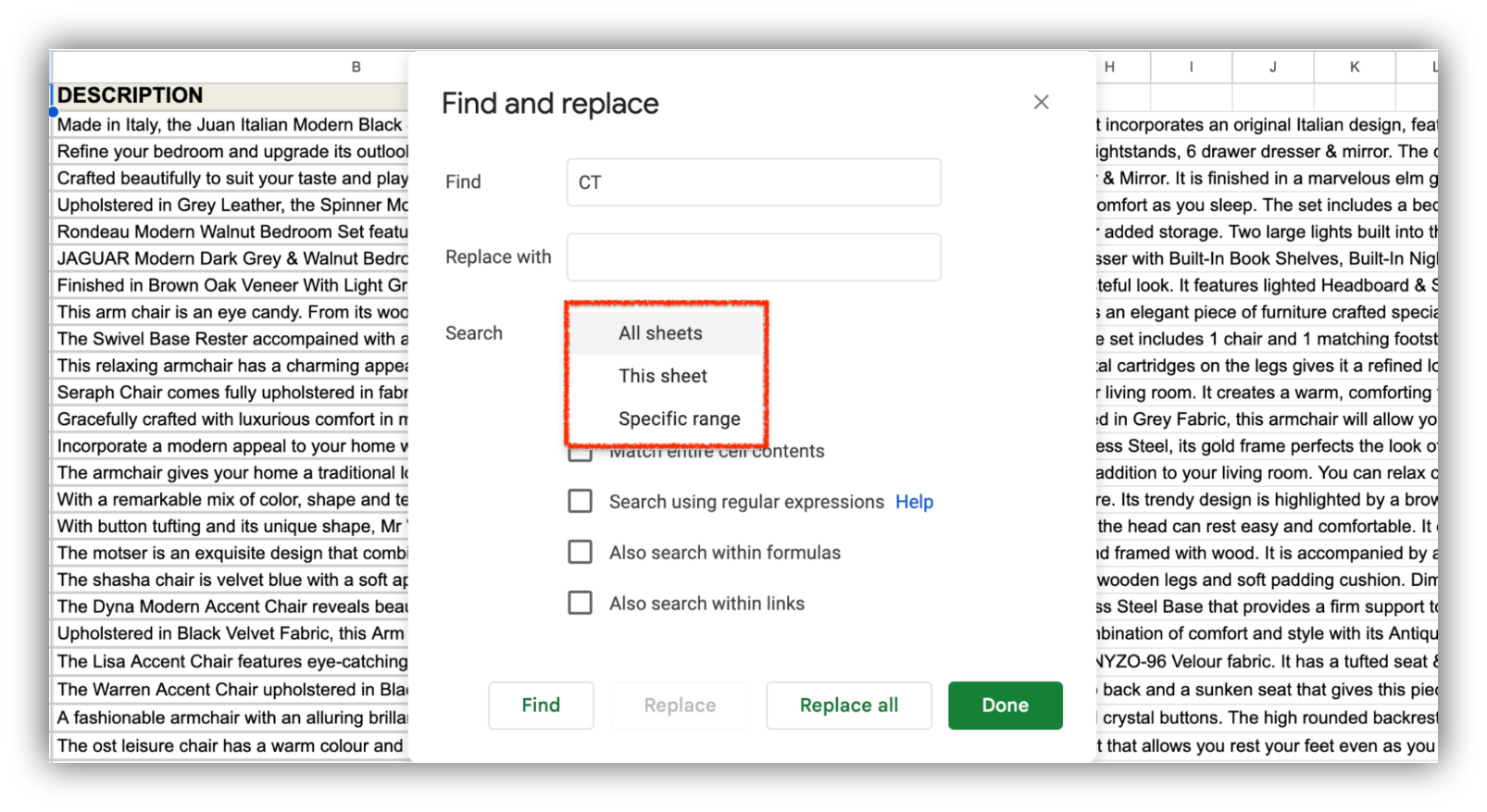
You have three options to choose from:
- Search all sheets: Google Sheets will scan through every sheet, including hidden sheets, and identify instances of your search term.
- Search this sheet: Google Sheets will restrict the search to the active sheet that you're working on to find instances of the search term within that specific sheet.
- Search specific range: Google Sheets will narrow down your search to a specific range within the active sheet to find what you’re looking for.
Step 4: (Optional) Customize your search using filters
To further modify your search, select any of the five options available:
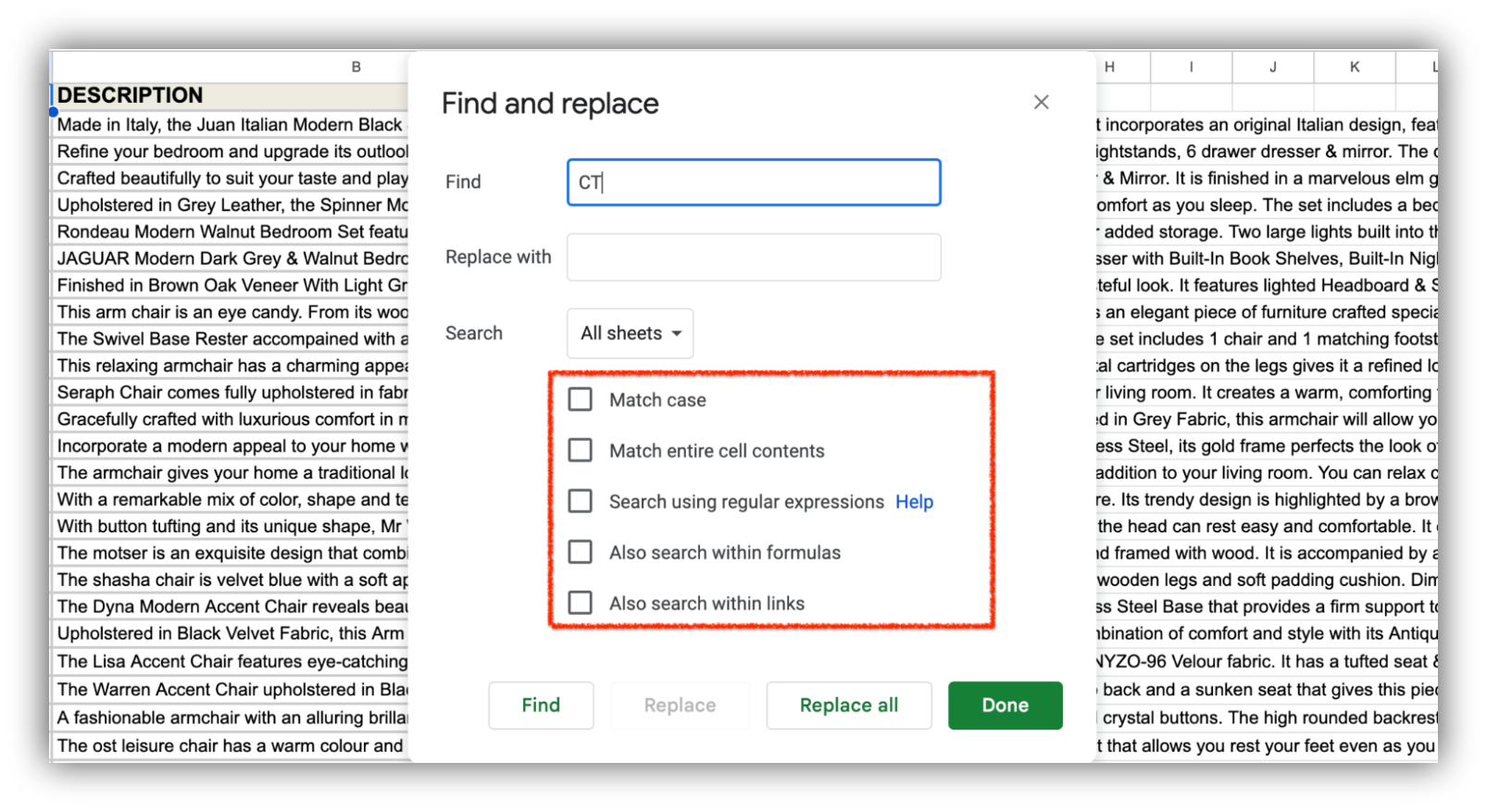
You can:
- Match case: ensures your search is case-sensitive — only instances of the search term with the exact same letter case are considered matches
- March entire cell contents: finds cells with the exact search term. If you search for "apple," only cells with "apple" without any additional text will match
- Search using regular expressions: finds content with specific patterns, such as dates, phone numbers, or email addresses.
- Also, search within formulas: finds instances of the search term used in calculations or functions
- Also, search within links: includes cells with URLs that match the search term.
Step 6: Click "Done" when you've completed the task
Once you've completed your search (and any necessary replacements—if this was your intention), click ”Done" to finish the search.

How to search in Google Sheets using Softr automation
Cost: $0
Time: 3 minutes
Softr automation allows you to automate repetitive search tasks, saving you time and effort. Once set up, the automation can perform searches and retrieve data without manual intervention. And the automation can handle more complex data searches involving multiple criteria, conditions, and patterns than Google Sheets functions.
If you're looking to implement search functionality in Google Sheets using Softr automation, follow these steps:
Step 1: Log in to Softr or create an account
First, log in to your Softr account. If you don’t have an account, sign up for free.
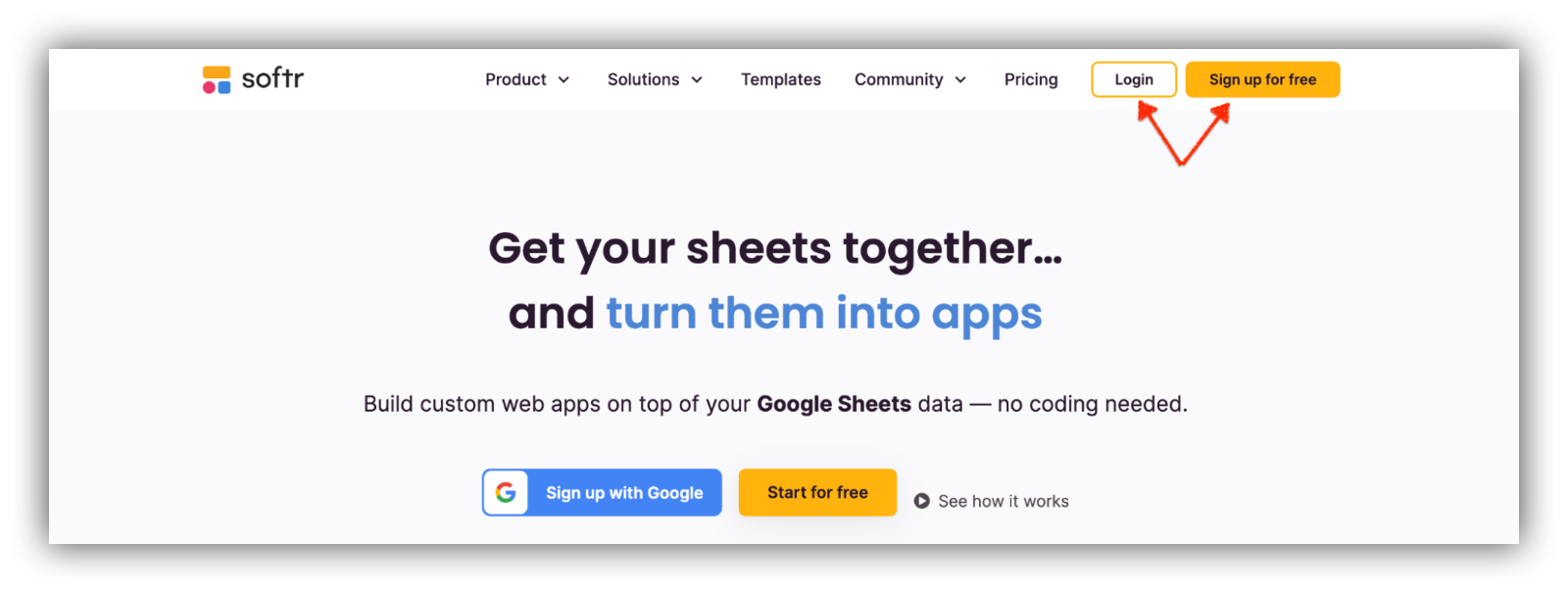
Step 2: Connect your Google Sheets account to Softr
To start with Google Sheets, you need to go to your Application Settings and navigate to Data Sources. Next, click Connect a Data Source and select Google Sheets from the list.
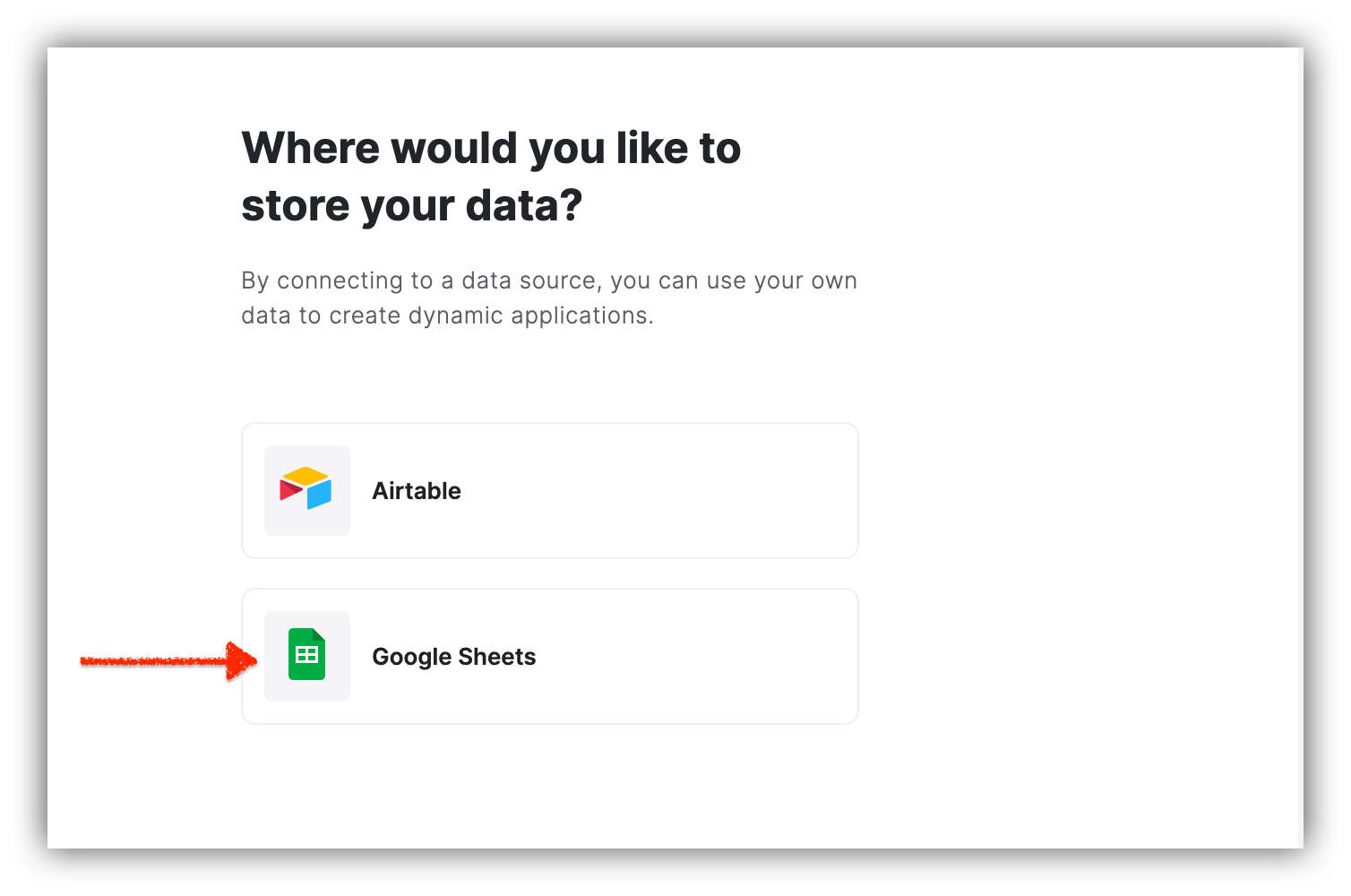
You’ll have to log into the Google Account you want to connect to or select it if you’re already logged in.
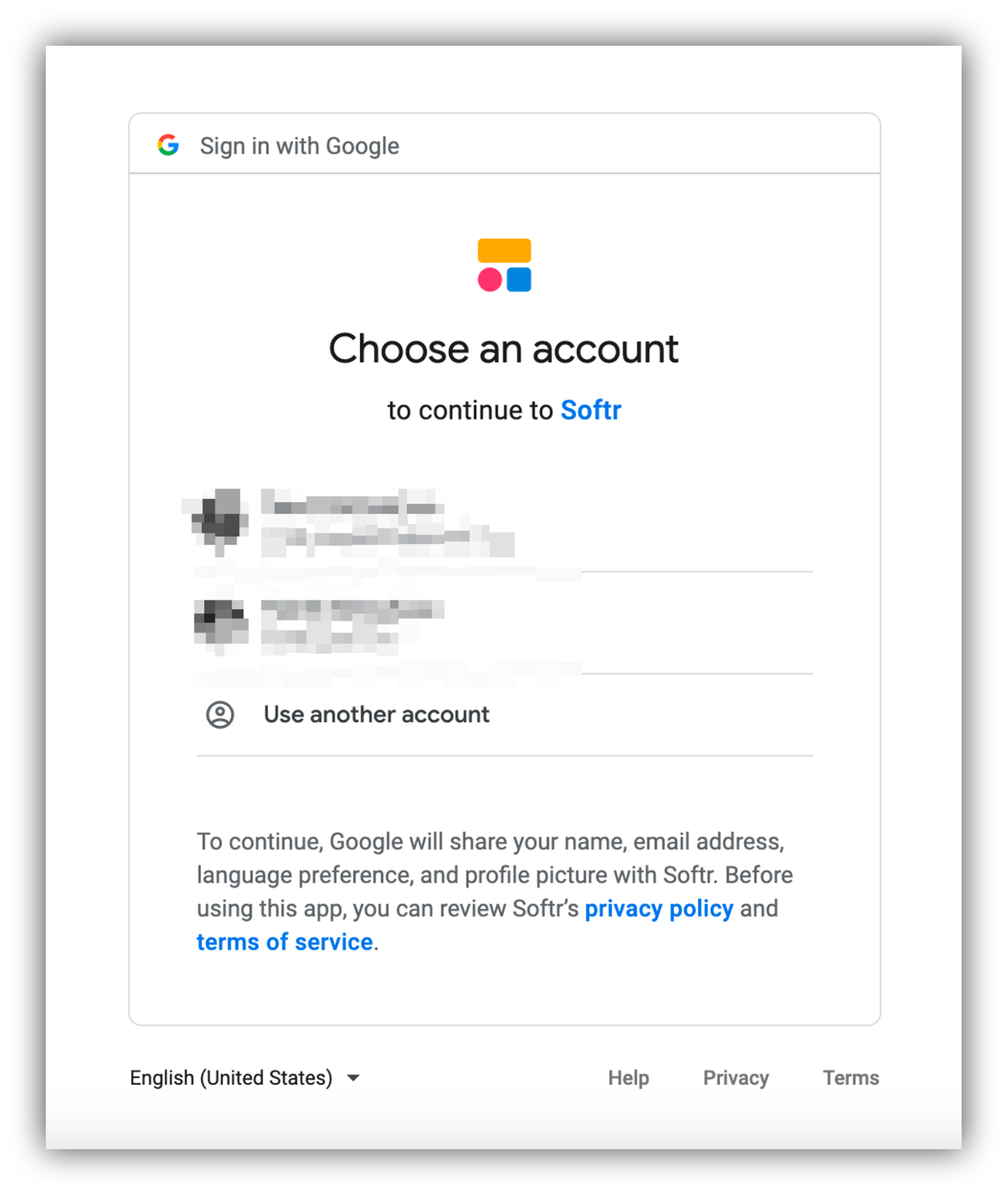
Then you need to authorize Softr to make changes in your associated account’s Google Sheets and Google Drive files. So, make sure to check the checkboxes highlighted below. Click Continue as soon as you’re done.
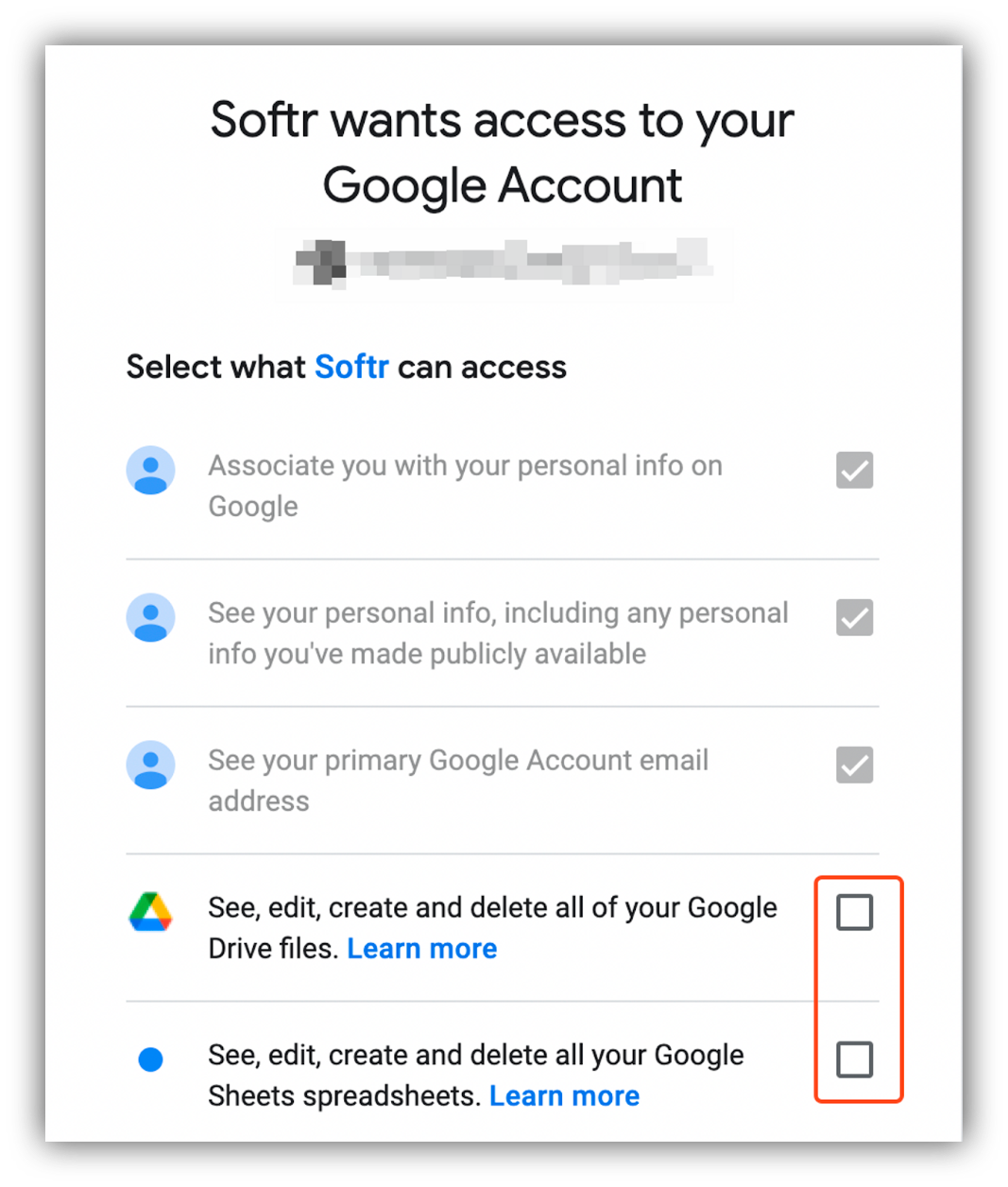
Step 3: Click the “+” sign to start selecting the Google Sheets you want to work on
After clicking the “+,” you'll find a sidebar with various blocks and components.
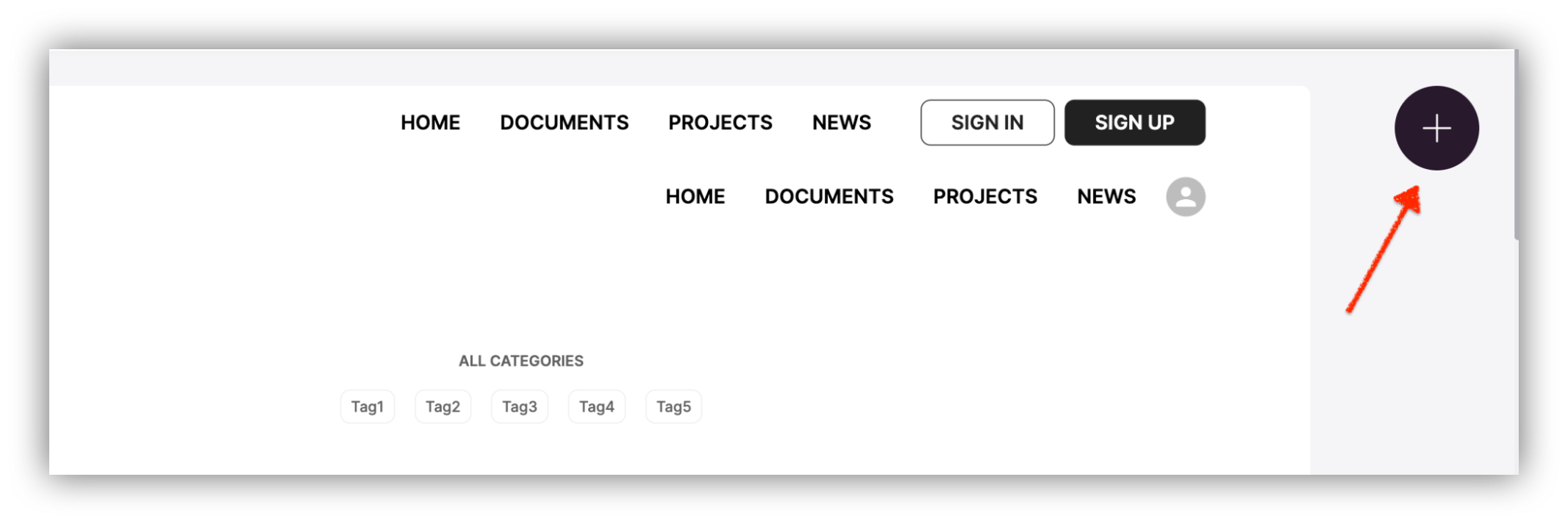
Browse through the dynamic blocks to find the ones that work with a data source, such as the List block, and choose any of the sheets from your library. Then select your connected Google Sheets account.
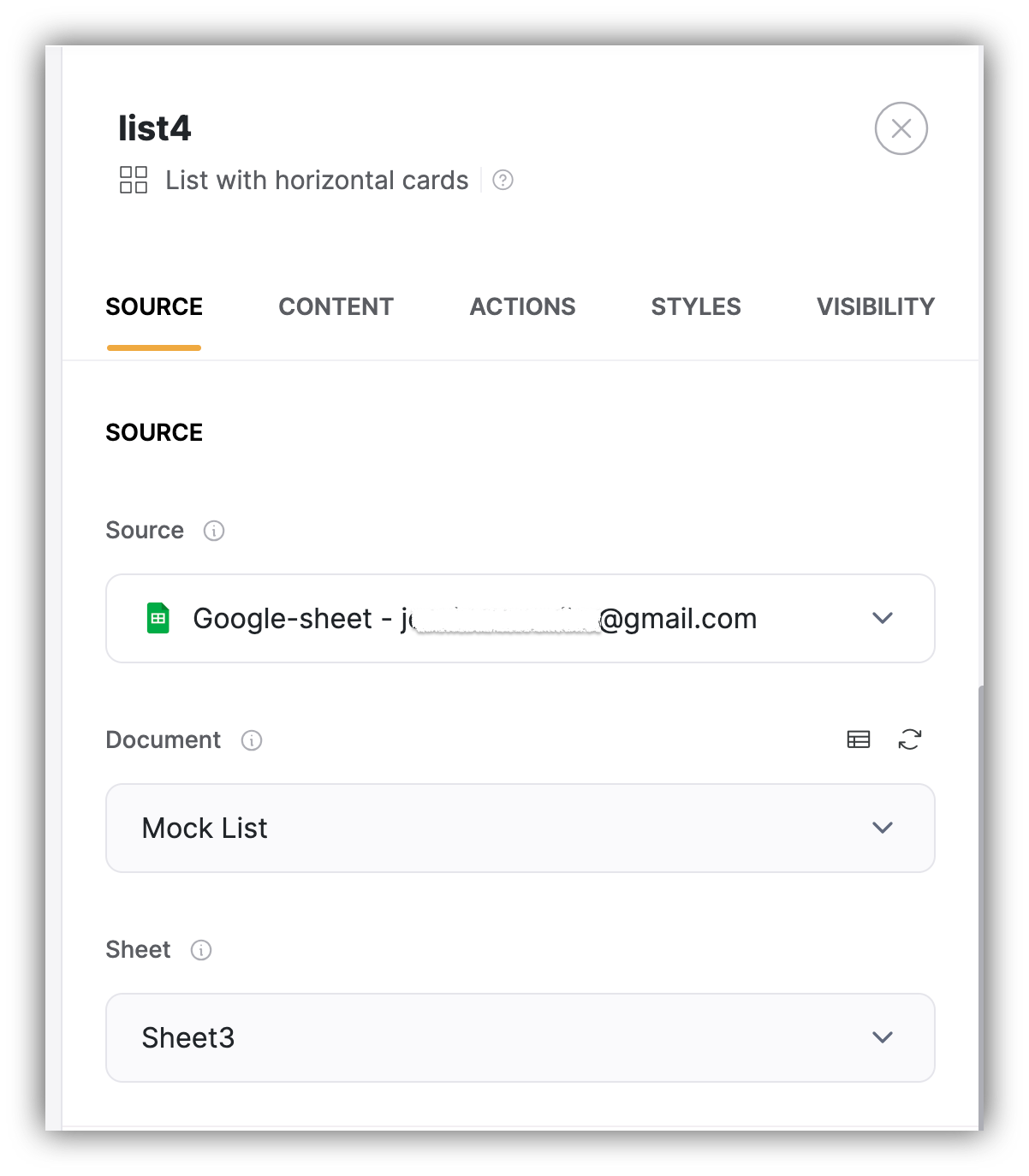
Step 4: Click the Content tab to set up the search bar
You can choose how you want your search bar to appear.
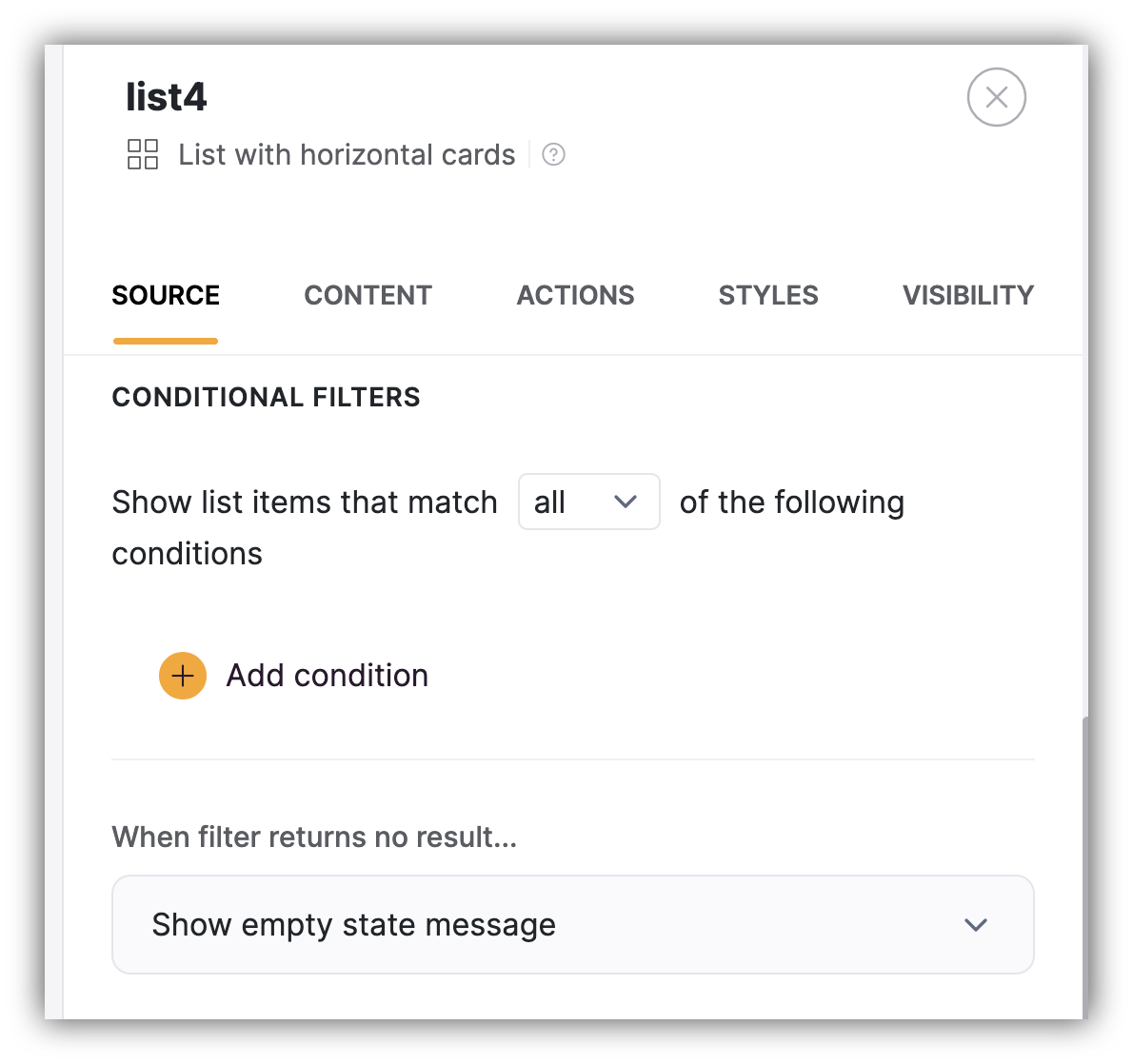
Step 5: Choose filters to find relevant results
Select search filters to get the most relevant results while searching.
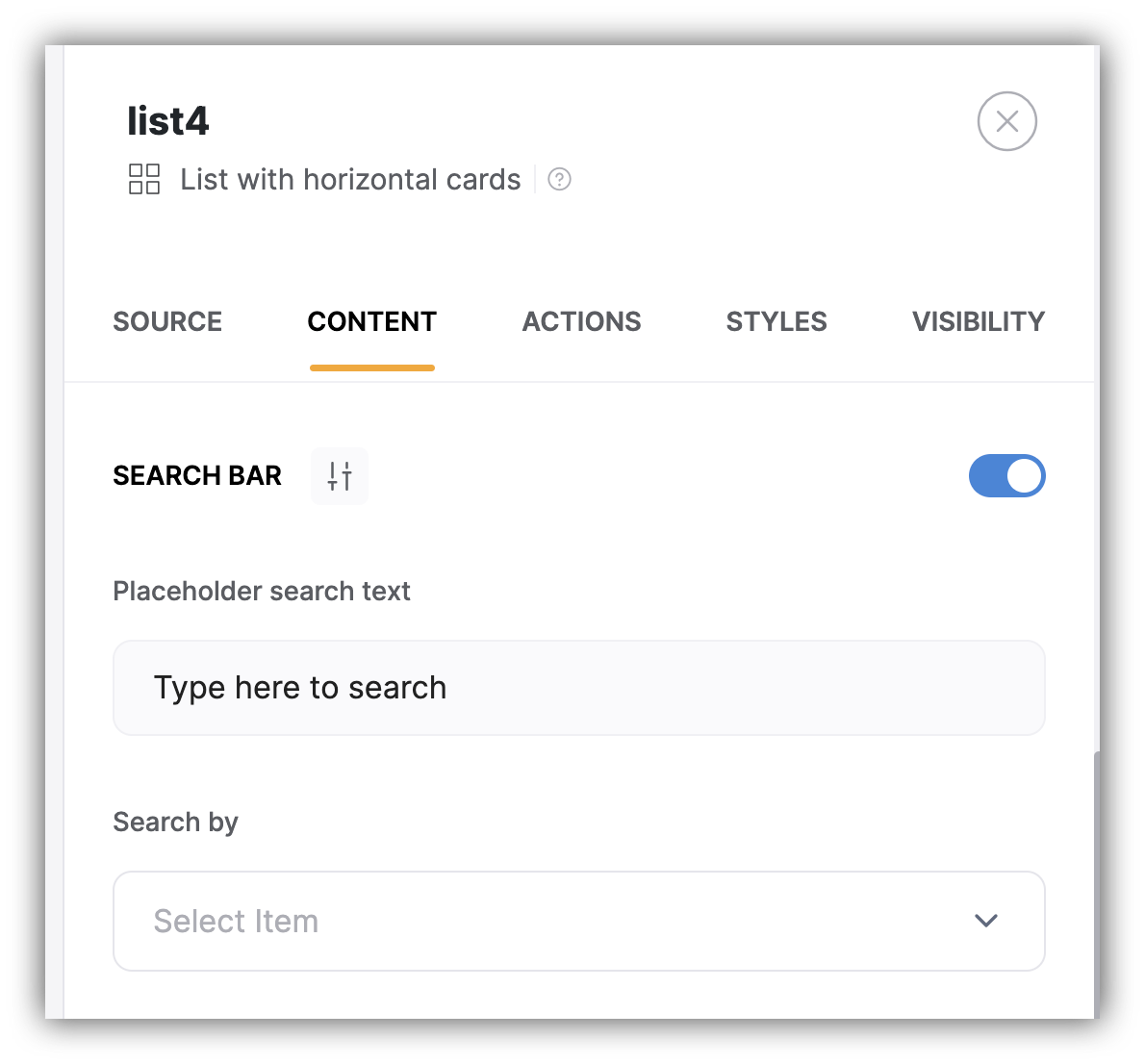
Step 6: Test and optimize the search function
Click the “preview” button to test and ensure the search function works well.
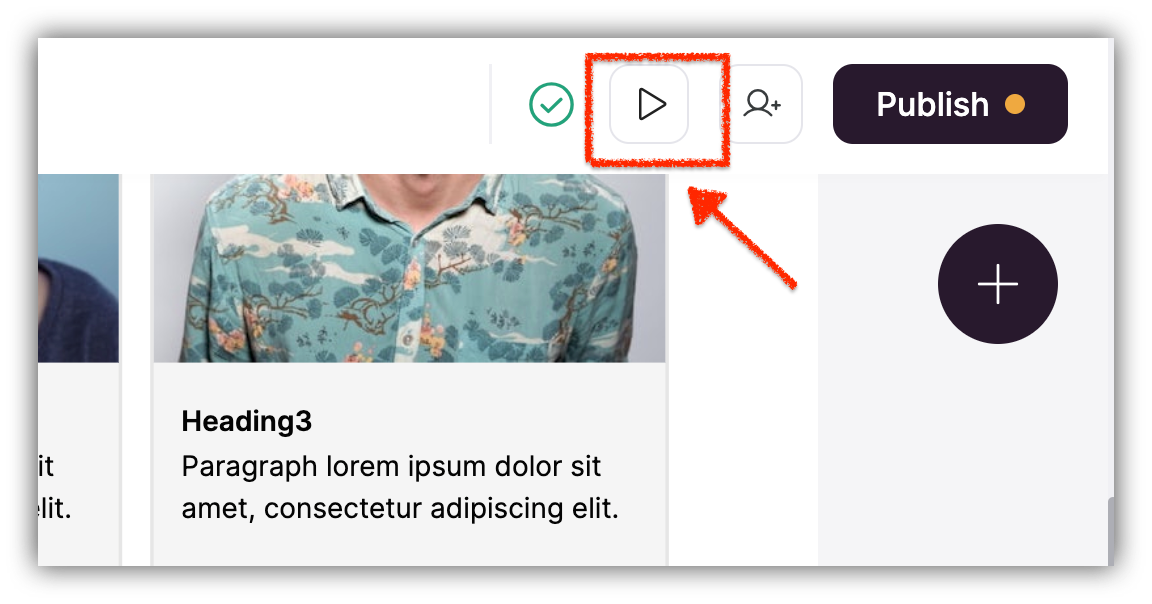
How to search in Google Sheets using shortcuts
Cost: $0
Time: 30 seconds
Using keyboard shortcuts is one of the quickest ways to search in Google Sheets. Here’s a step-by-step breakdown to help you get started:
Step 1: Open your Google Sheets document
Open the Google Sheets document where you want to perform the search.
Step 2: Press "Ctrl + F" (Windows/ChromeOS) or "Cmd + F" (Mac) on your keyboard
To begin the search, press Ctrl (or Cmd on Mac) + F. This keyboard shortcut opens the "Find" dialog.

Step 3: Enter the text or value you want to search
In the "Find" dialog, type the word or phrase you want to search for. Google Sheets will automatically start highlighting instances of the search term as you type.

How to search in Google Sheets using conditional formatting
Cost: $0
Time: 4 minutes
Conditional formatting allows you to visually highlight and format cells based on specific conditions. While it doesn't provide a direct way to search for data like functions do, you can use it to highlight data that matches certain criteria.
Here's how to use conditional formatting to achieve a search-like effect:
Step 1: Click and drag to select the range of cells you want to search
After opening the Google Sheet document, you want to work on, select the range of cells where you want to apply conditional formatting. There are two ways to do this.
Click the area in the upper-left corner of the spreadsheet to select the entire sheet
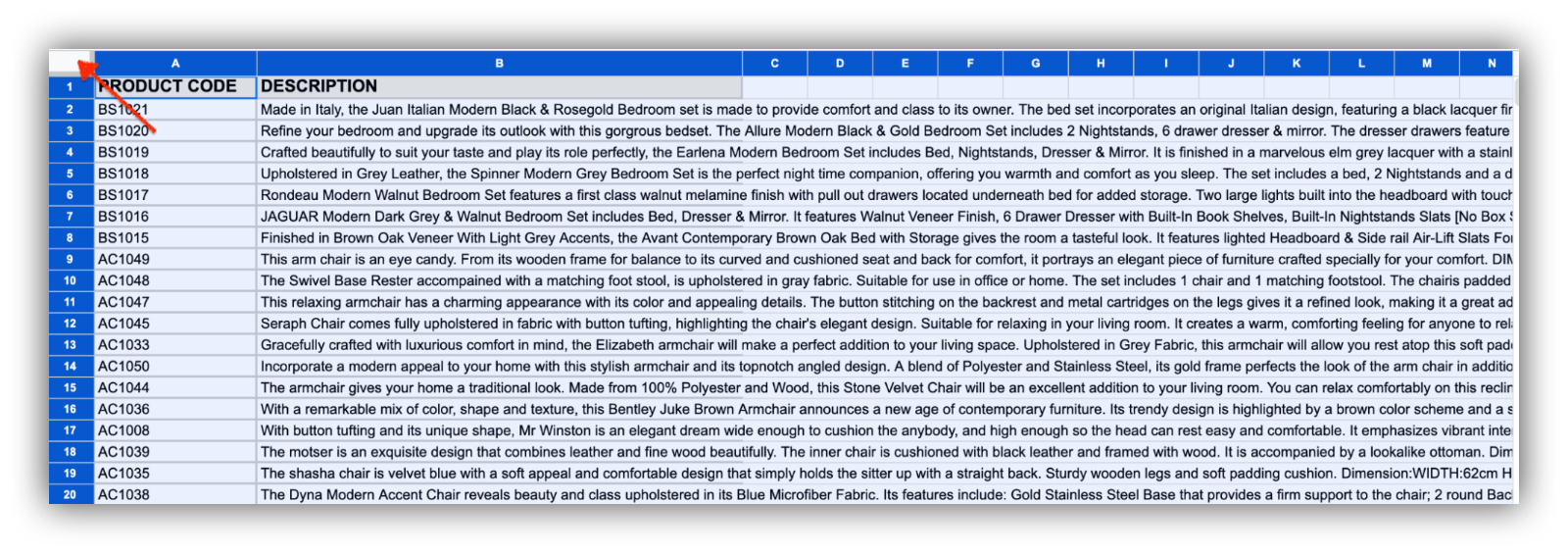
Or click a column and drag to select the range of cells you want to search, depending on your needs.
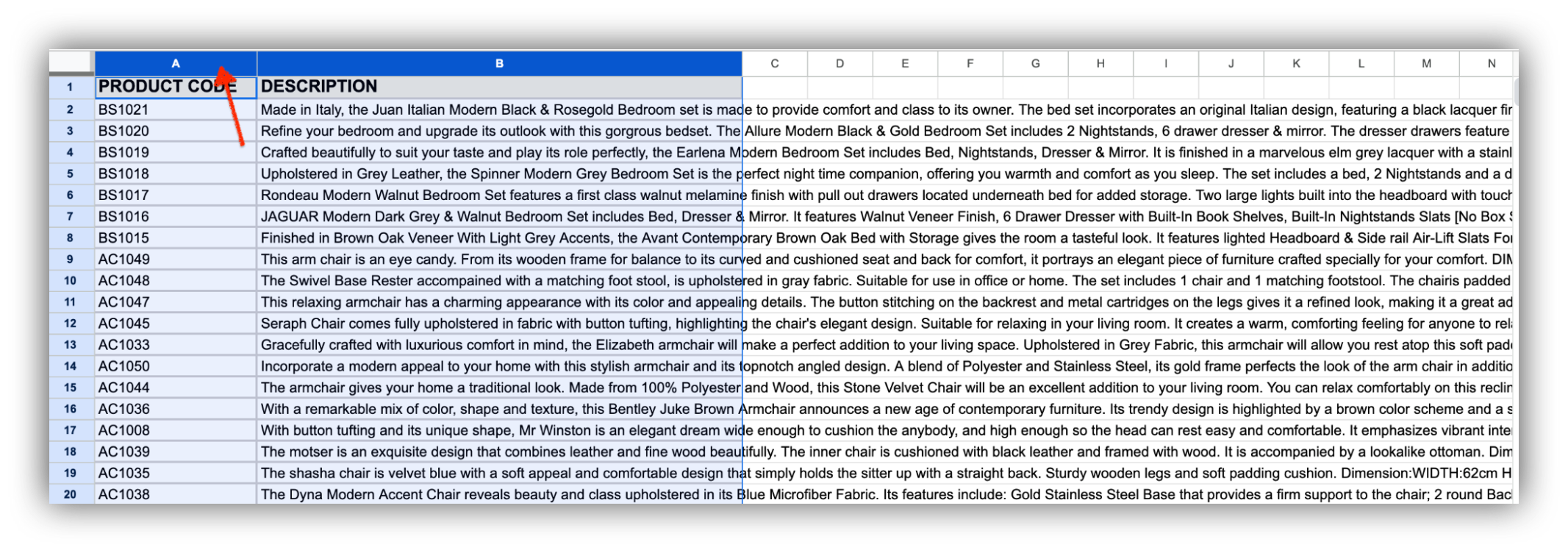
Step 3: Enter the formula that will match your search criteria
In the "Conditional format rules" sidebar that appears on the right, select the dropdown under "Format cells if" and choose "Custom formula is” from the list of options.
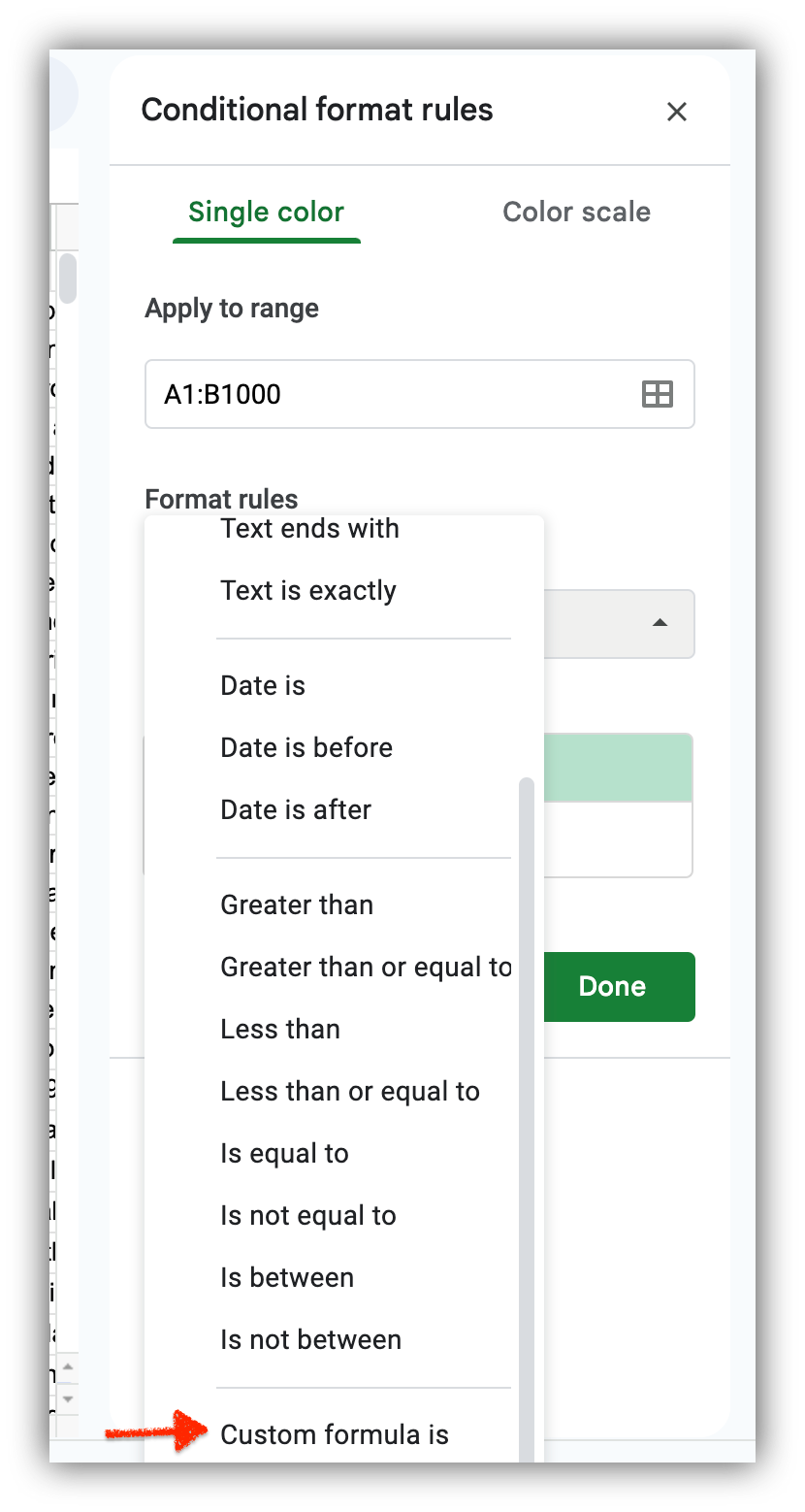
Step 4: Choose the formatting style you want for the selected range
Below the formula input, you can set the formatting style that you want to apply to cells that meet the condition. Click on the "Formatting style" dropdown to choose a style, such as text color, background color, or font style.
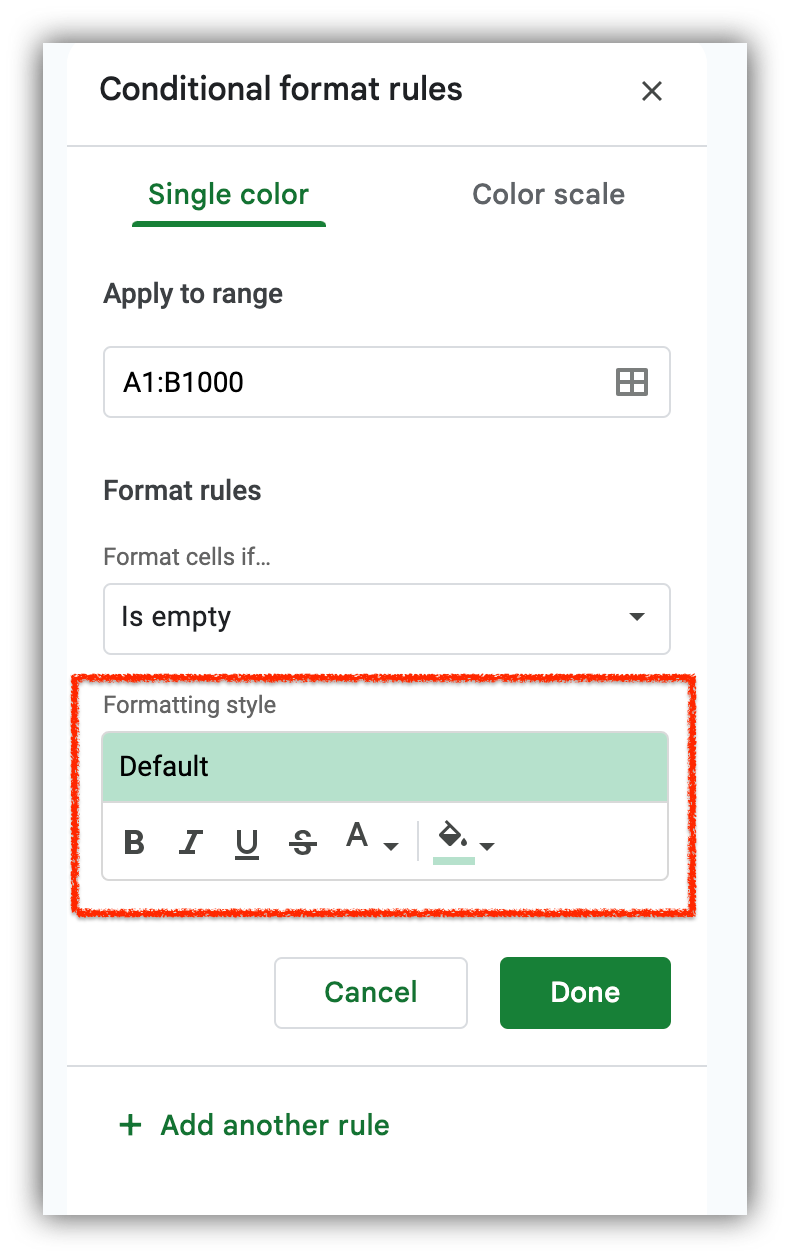
Step 5: Click "Done" to apply changes
Once you’re satisfied, click the "Done" button to apply the formatting.

How to search in Google Sheets using filter views
Cost: $0
Time: 3 minutes
Using Filter Views in Google Sheets allows you to create custom filtered versions of your data without affecting the view for others. It's a powerful way to focus on specific information. Here's how to use Filter Views to search in Google Sheets:
Step 1: Click on Data > Filter views > Create a new filter view
Click and drag to select the range of cells containing the data you want to search through. In the menu bar at the top, click on "Data" and select "Filter views" from the dropdown menu, then choose "Create a new filter view."
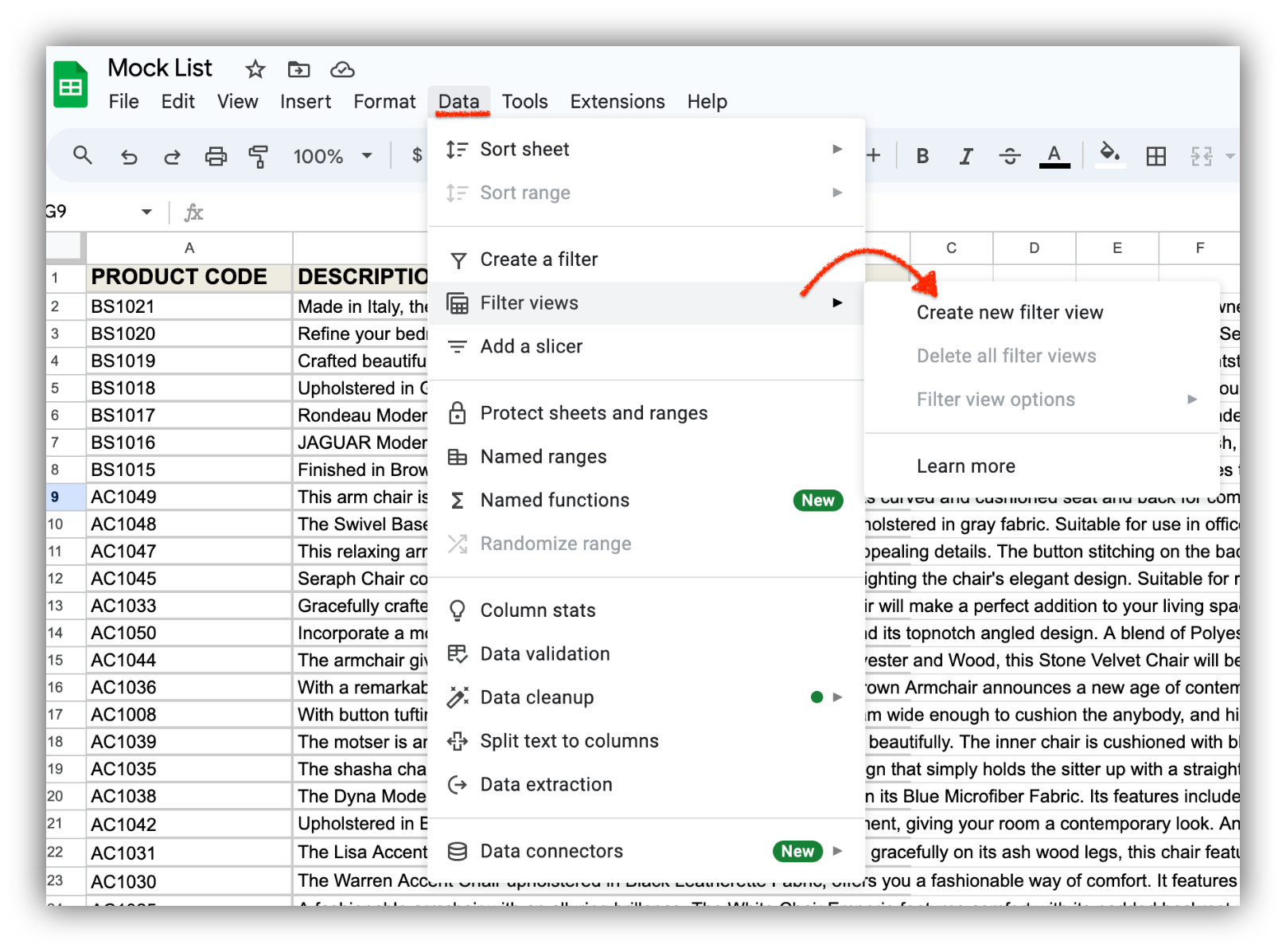
Step 2: Set conditions for each column using the filter options
A filter panel will appear at the top of your sheet, like the one highlighted in the screenshot below.

In the first row of the filter panel, you'll see dropdowns for each column header in your selected range.
Step 3: Click on the column dropdown where you want to apply a filter
In the filter view toolbar that appears at the top of the sheet, click on the filter icon (funnel-shaped icon) next to the header of the column you want to search. This will open the filter options for that column.
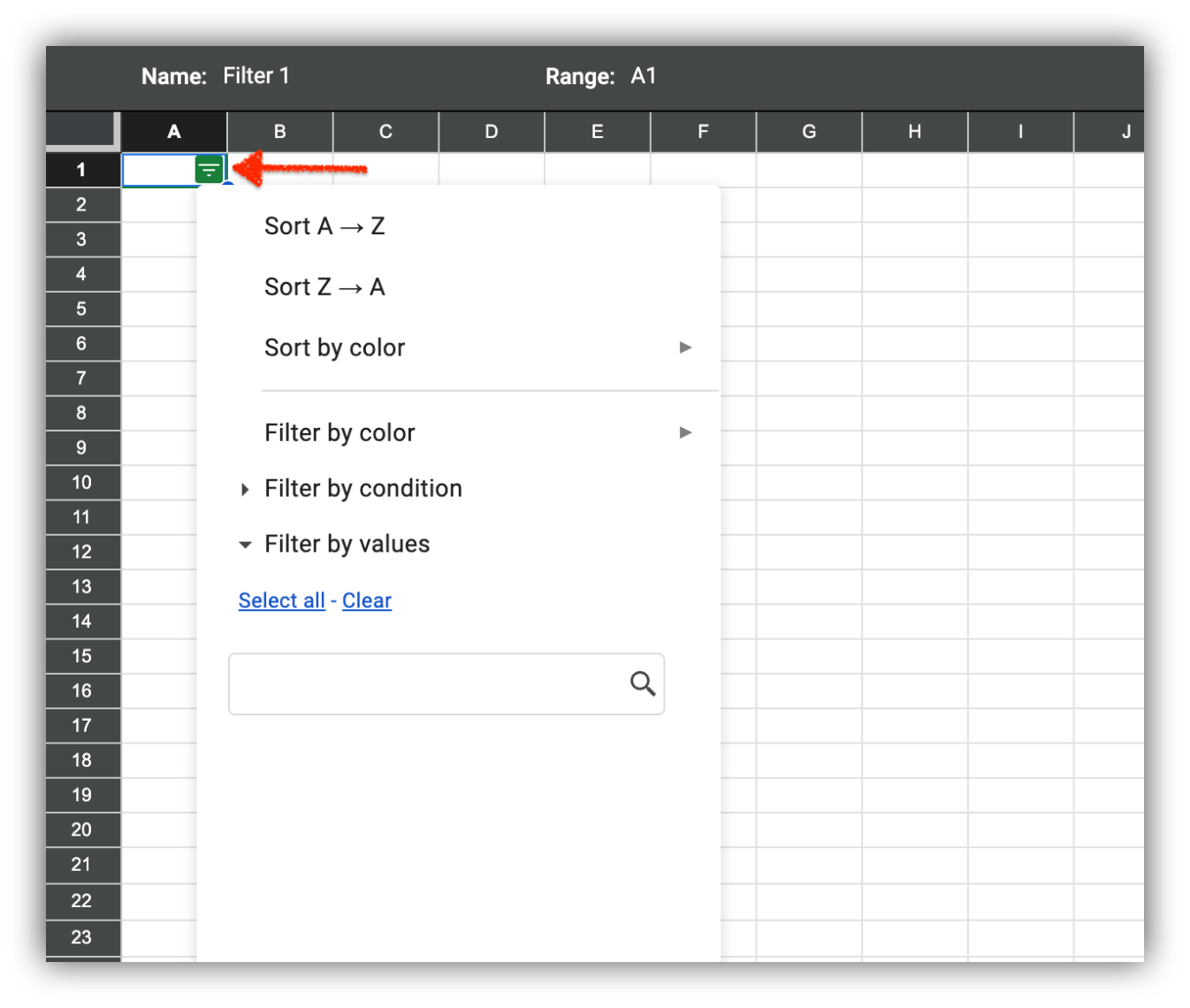
Depending on the data type in the column, you can select various filter criteria such as text, numbers, colors, dates, and more. You can also apply multiple filters by choosing another column's filter and criteria. Google Sheets will combine the filters to show rows that meet all the selected criteria.
Step 4: Click Save to create the filter view
After selecting the filter criteria, click "OK" or press Enter. The filter view will be applied, showing only the rows that match the selected criteria.
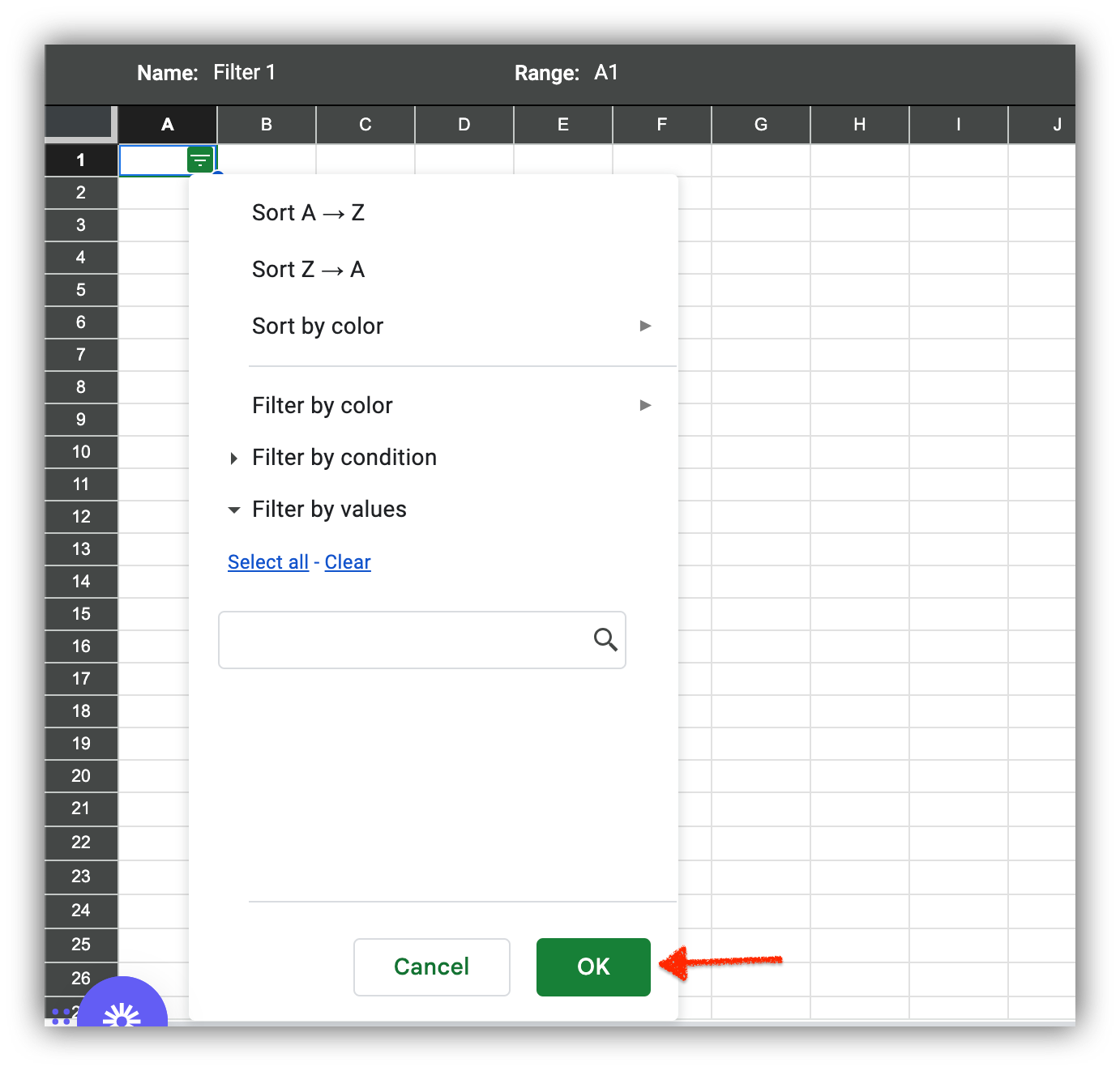
You'll notice that only the rows that meet your filter criteria are visible, while the rest of the data is temporarily hidden.
How to search Google Sheets using VLOOKUP Function
Cost: $0
Time: < 1 minute
VLOOKUP is great for fast searches and simple data retrieval. Yet, it has restrictions: you can only search the first column of a table and sort data for close matches.
Step 1: Identify the search criteria
Determine the value you want to search for. This could be a specific name, ID, or any other unique identifier. For example, if you have a table of products in columns A, B, and C, you could make finding the price of "Product B" your priority.

Step 2: Choose a cell for the VLOOKUP result
Decide on a cell where you want the result of the VLOOKUP function to appear.
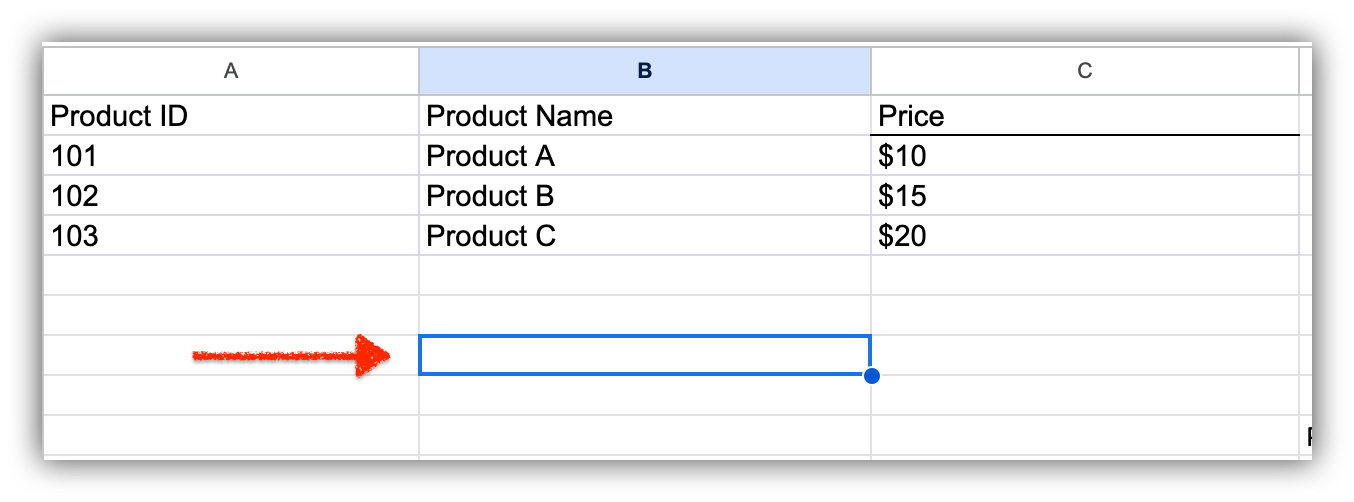
This cell will display the result based on your search.
Step 3: Set up the VLOOKUP function
In the cell where you want the result, type the following formula: =VLOOKUP(search_key, range, index, [is_sorted])

Step 4: Fill in the parameters
To do this, you should be clear on what you’re replacing each parameter with:
- search_value: Replace this with the value you're searching for (e.g., the name or ID you identified earlier).
- range: Specify the range where the data is located. This should include the column with the search criteria and the column with the corresponding information you want to retrieve.
- index: Indicate the column number (starting from 1) that contains the information you want to retrieve based on the search.
- is_sorted: Enter TRUE if your data is sorted in ascending order or FALSE if it's not sorted.
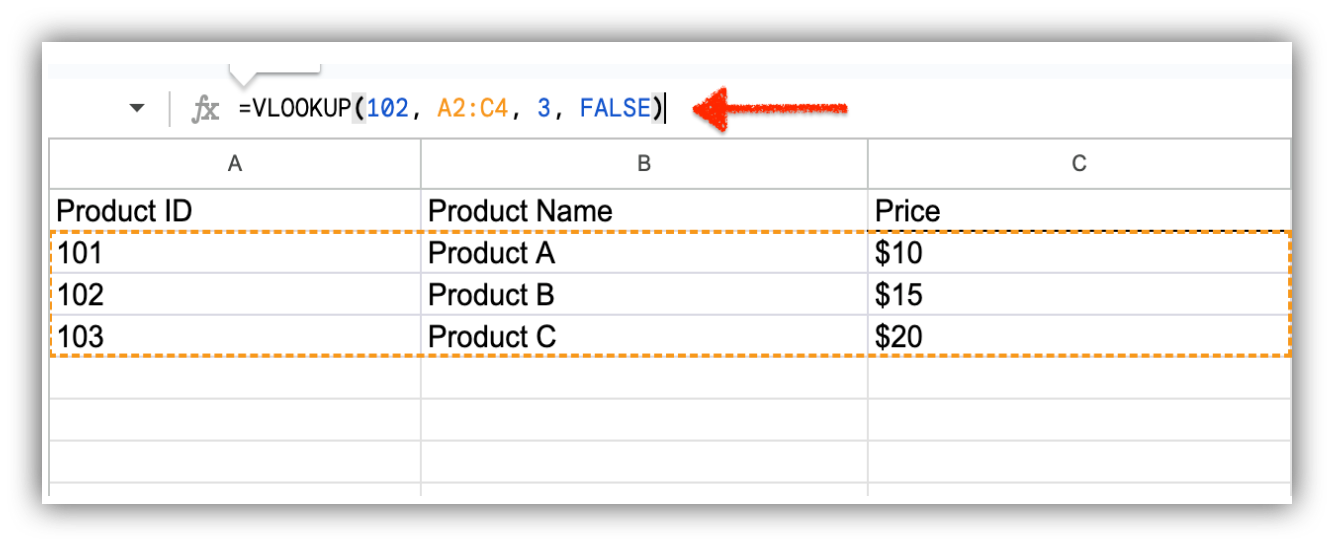
Here, 102 is the lookup value, A2:C4 is the table range, 3 indicates the third column (which is the price column), and FALSE specifies an exact match.
Step 5: Hit “Enter” to get the search result
After filling in the parameters, press Enter, and the VLOOKUP function will retrieve the desired information based on the search criteria you provided.
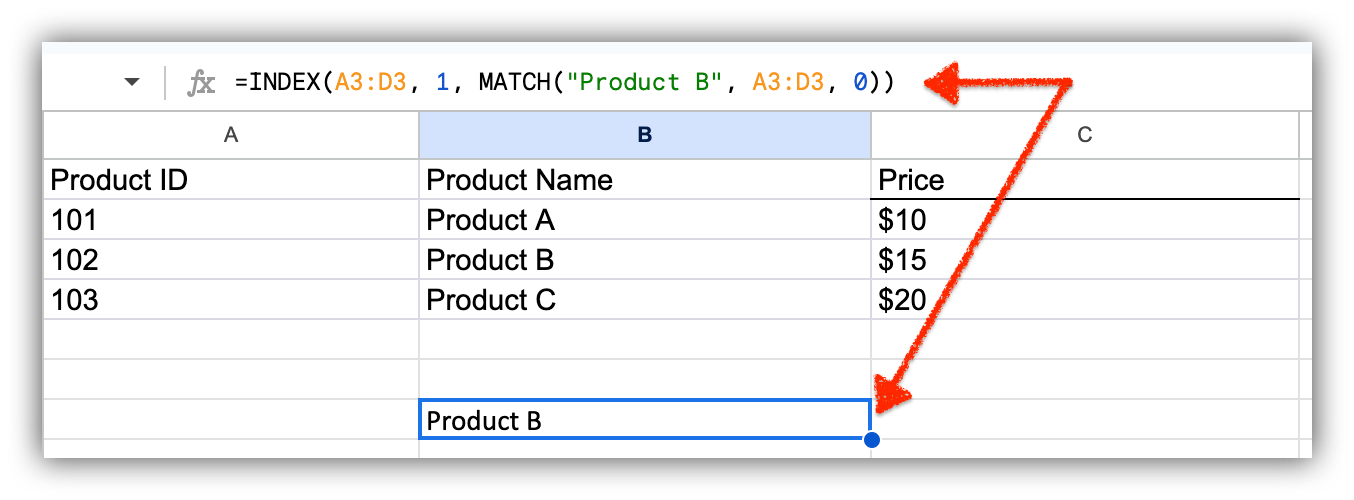
The result in this case is “Product B.”
How to search Google Sheets using HLOOKUP Function
Cost: $0
Time: < 1 minute
The HLOOKUP function allows you to search for a value in the first row of a range and retrieve a corresponding value from another row within the same column.
Step 1: Identify the search criteria
Determine the value you want to search for horizontally. This could be a specific name, ID, or any other unique identifier. For example, if you have a table of products in columns A, B, and C, you could make finding the price of "Product A" your priority.

Step 2: Choose a Cell for the HLOOKUP Result
Select a cell where you want the result of the HLOOKUP function to appear. This cell will display the information retrieved based on your search.

Step 3: Set Up the HLOOKUP Function
To search using this function, use the formula “=HLOOKUP(search_key, range, index, [is_sorted]).”
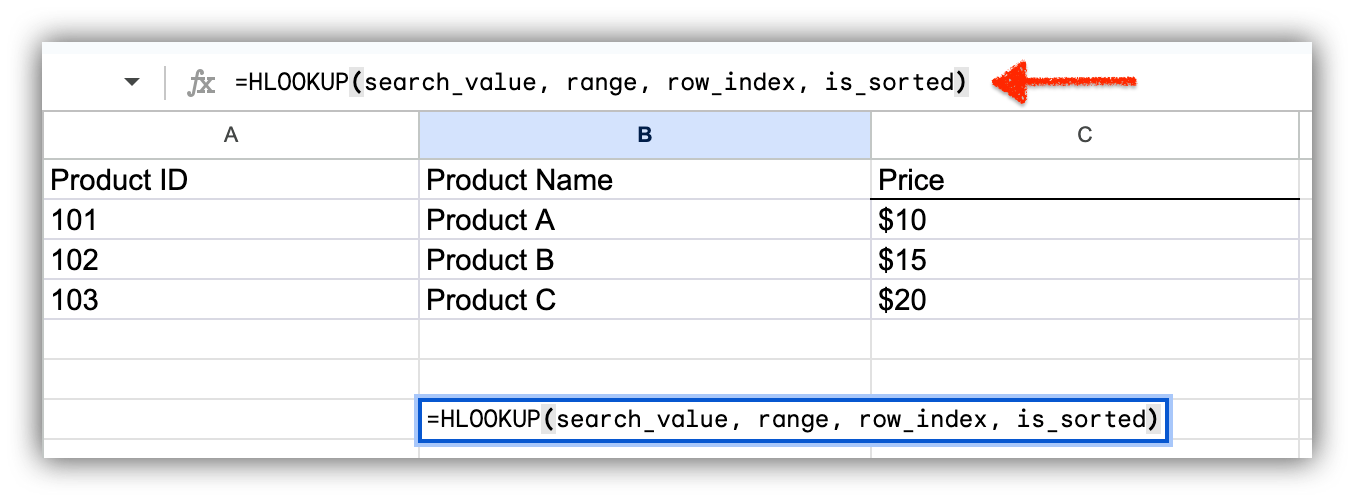
Step 4: Fill in the parameters
To do this, you should be clear on what you’re replacing each parameter with:
- search_key: Replace this with the value you're searching for horizontally (e.g., the name or ID you identified earlier).
- range: Specify the range where the data is located. This should include the row with the search criteria and the rows with the corresponding information you want to retrieve.
- row_index: Indicate the row number (starting from 1) that contains the information you want to retrieve based on the search.
- is_sorted: Enter TRUE if your data is sorted in ascending order or FALSE if it's not sorted.
After filling in the parameters, press Enter, and the HLOOKUP function will retrieve the desired information based on the search criteria you provided.
HLOOKUP is limited to searching the first row of the range for values, so if the search value is not found, it may return an error or an undesired result.
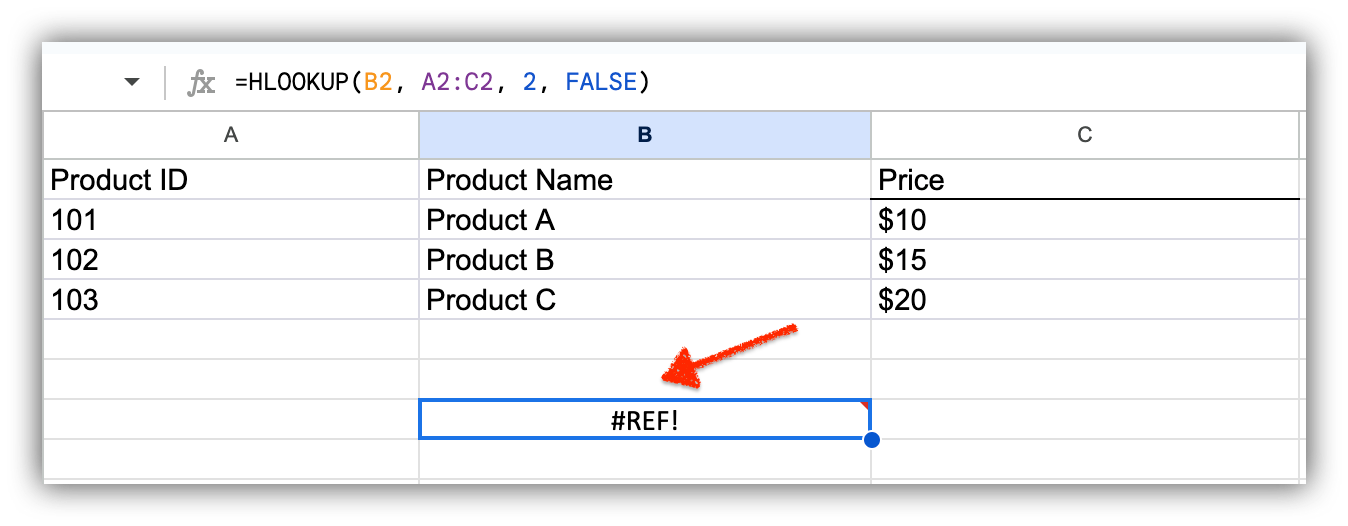
How to search using INDEX and MATCH functions
Cost: $0
Time: < 1 minute
The combination of the INDEX and MATCH functions in Google Sheets is a powerful way to perform more flexible and dynamic searches.
Using both functions together provides more flexibility than VLOOKUP or HLOOKUP, as you can search based on various criteria and retrieve data from different rows and columns in your sheet.
Step 1: Choose your search criteria and the cell to display the result
Identify the value you want to search for and select the cell (or cells) where you want the result of the INDEX and MATCH functions to appear.
Step 2: Set up the INDEX and MATCH functions
Suppose you want to find the price of "Product B" using the INDEX and MATCH functions. In the cell where you want the result, type the following formula: =INDEX(range_to_return, MATCH(search_value, search_range, 0))

Step 3: Fill in the parameters
For the parameters,
- range_to_return: Specify the range that contains the information you want to retrieve based on the search. This range should include the data you want to display when a match is found.
- search_value: Replace this with the value you're searching for (e.g., the name or ID you identified earlier).
- search_range: Specify the range where the search value should be located. This range should include the column or row containing the search criteria.
After entering the formula, press Enter. The INDEX and MATCH functions will work together to retrieve the desired information based on the search criteria you provided.
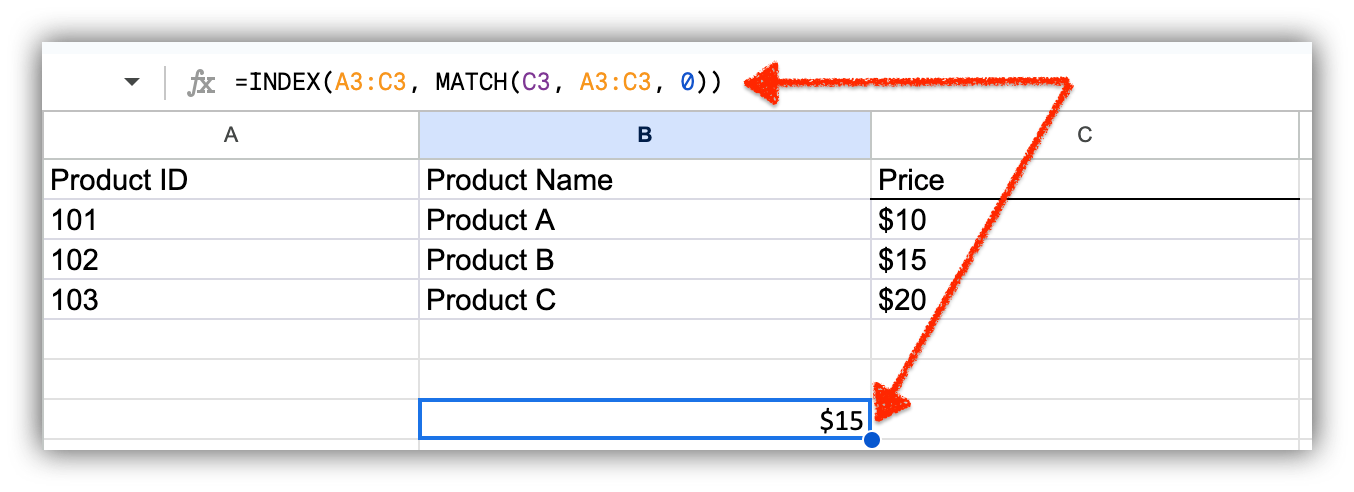
Step 4: Review the Result
The cell where you entered the formula will display the result of the INDEX and MATCH functions. If the search value is found in the specified search range, it will show the corresponding information. If it isn't, it might display an error message.
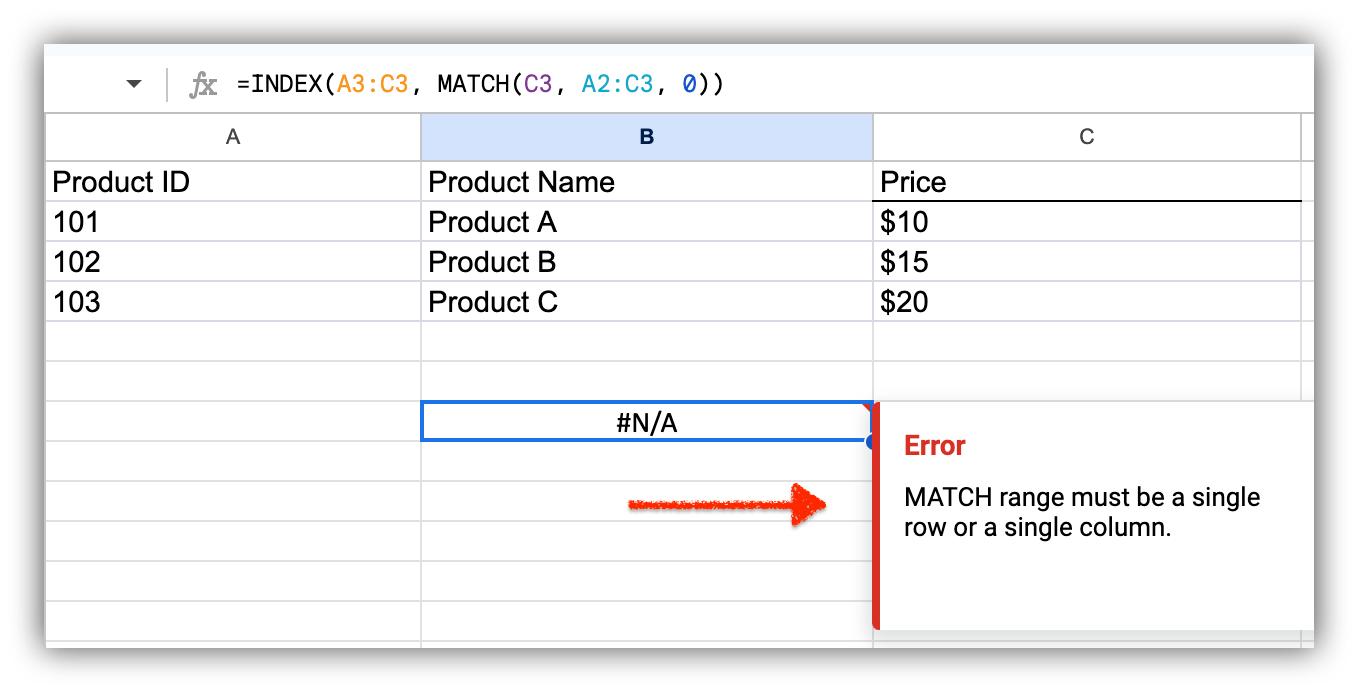
How to search using QUERY Function
Cost: $0
Time: < 1 minute
The QUERY function in Google Sheets allows you to perform SQL-like queries on your data. It is incredibly flexible and can handle more complex queries involving sorting, grouping, and filtering. This is especially useful when handling larger datasets or when you need to combine and manipulate data from multiple sheets.
If you're familiar with SQL, you can use this function to perform advanced searches.
Step 1: Identify the search criteria
Determine the conditions you want to use for your search. This could involve specifying columns, conditions, sorting, and more.
Step 2: Choose a cell for the Query result
Select a cell or range of cells where you want the result of the QUERY function to appear. This is where the retrieved data based on your search will be displayed.
Step 3: Set Up the QUERY Function
In the cell where you want the result, type the following formula: =QUERY(data_range, query_expression, headers), where:
- data_range: The range of data you want to query, including headers.
- query_expression: Your SQL-like query expression is enclosed in double quotes.
- headers: A number (1 or 0) indicating whether your data range has headers.
For example, using the same table, you can retrieve the price of "Product A" with the same expression. The formula will return the price of $10 in the cell where you placed it.
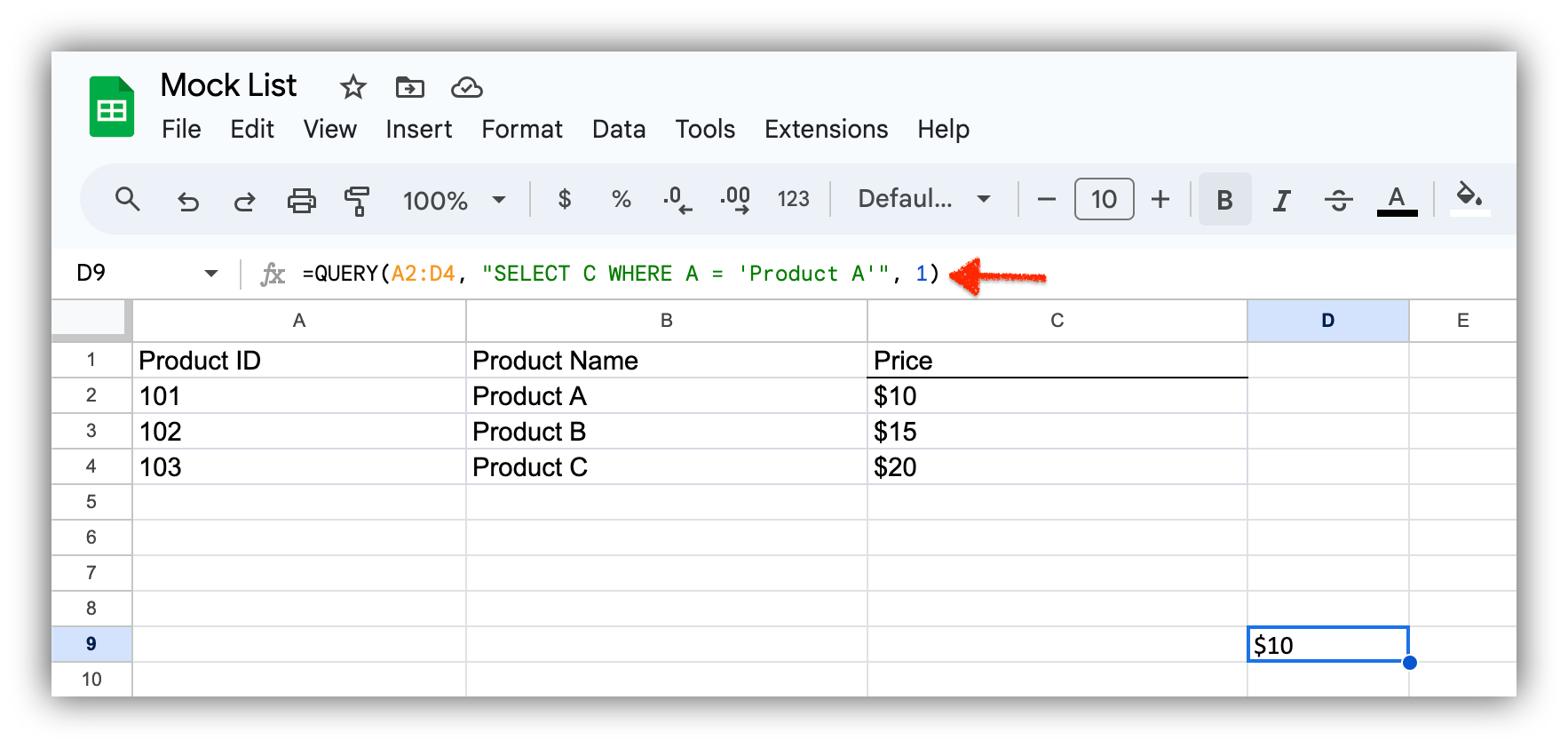
Step 4: Review the Result
The cell where you entered the formula will display the result of the INDEX and MATCH functions. If the search value is found in the specified search range, it will show the corresponding information. If it isn't, it might display an error message.
Bonus: Build a simple interface for your Google Sheets data
After mastering the search functionalities in Google Sheets, you're ready to navigate and manage your data with greater efficiency. However, if you're looking to elevate your data game even further, consider using a no-code platform like Softr.
With Softr, you can easily transform your Google Sheets data into interactive, custom business applications, such as portals, CRMs, trackers, or dashboards. Advanced user groups and custom permissions is especially useful for customizing what data you want your users to be able to view and edit. This way, you can ensure your users can easily find the data they need without having to sort through a chaotic spreadsheet.
What is Softr
Join 700,000+ users worldwide, building client portals, internal tools, CRMs, dashboards, project management systems, inventory management apps, and more—all without code.



















